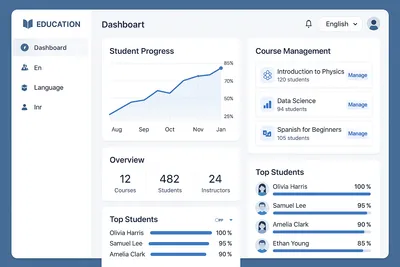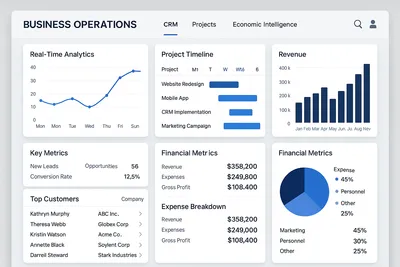Lifeplan.Vision - Systematic Personal Alignment
Personal development fragments across disconnected tools that treat symptoms rather than systemic misalignment. When core values contradict chosen roles, or life goals conflict with authentic identity, persistent inner tension persists regardless of external achievement. Lifeplan.Vision applies systematic integration methodology to the domain of consciousness itself—transforming values, roles, and goals into a coherent life blueprint through AI-augmented NLP processes. Daily meditation integration ensures continuous calibration, converting episodic planning into sustained personal evolution.
Key Features
NLP-Derived Alignment Methodology
Twenty years of consciousness studies applied to personal development. Systematic identification and integration of values, identity roles, and life goals through proven Neuro-Linguistic Programming frameworks that reveal hidden conflicts and enable authentic alignment.
AI-Augmented Self-Discovery
Local LLM processing provides Socratic questioning, conflict detection, and integration suggestions without compromising privacy. AI supports illumination rather than automation—enhancing reflection without replacing inner wisdom.
Daily Meditation Integration
Transforms episodic life planning into daily consciousness development practice. Meditation tracking with custom formats, session analytics, and streak monitoring creates habit-forming engagement that sustains alignment awareness.
Privacy-Preserving Architecture
Complete offline-first functionality with optional encrypted sync. All AI processing happens locally through Ollama. Personal development data remains entirely under user control—zero surveillance capitalism.
The Misalignment Crisis
Most personal dissatisfaction stems not from lack of effort or achievement, but from fundamental misalignment between three core aspects of human existence: what individuals truly value at their deepest level, who they see themselves as through various identity roles, and what they pursue as life goals. This misalignment manifests as persistent inner tension regardless of external success.
A professional might value freedom and creativity while maintaining a corporate role that demands conformity and routine. Parents prioritize family connection yet pursue career goals requiring extensive travel and reduced presence. Individuals espouse simplicity as a core value while chasing wealth accumulation. These contradictions create ongoing psychological friction—the feeling of running hard while making no meaningful progress.
Fragmentation Across Tools
Traditional personal development approaches scatter across disconnected tools. Goal-setting applications focus on achievement tracking without examining whether goals align with authentic values. Journaling provides reflection space without systematic conflict detection. Therapy addresses symptoms of misalignment without providing structural frameworks for integration. Habit trackers optimize behaviors without questioning whether those behaviors serve genuine priorities.
Each tool addresses surface manifestations while the underlying system remains incoherent. Users accumulate productivity systems, motivational frameworks, and self-improvement techniques without resolving the fundamental question: are these pursuits aligned with who they actually are and what genuinely matters to them?
The Cost of Persistent Conflict
When values contradict roles, and roles conflict with goals, the psychological cost compounds over time. Decision-making becomes paralyzing when every choice requires compromise between competing priorities. Motivation deteriorates when achievement feels hollow. Relationships suffer when authentic self-expression contradicts role expectations. The harder individuals push toward misaligned goals, the more depleted they become.
This is not a problem of willpower or discipline. It represents structural incoherence—attempting to build a life on contradictory foundations. No amount of productivity optimization or habit formation resolves systemic misalignment.
The NLP-Derived Alignment Framework
Methodological Foundation
Lifeplan.Vision applies systematic integration methodology to consciousness development itself. The framework draws from twenty years of consciousness studies through the Arcane School, incorporating Neuro-Linguistic Programming insights about how linguistic and conceptual structures organize human experience.
The methodology recognizes that happiness and fulfillment emerge not from achieving particular outcomes, but from living in alignment—when daily actions, identity expression, and deepest values operate in harmony. This represents consciousness-aware technology applied to inner work rather than productivity optimization.
The Values-Roles-Goals Trinity
Values serve as system constants—the fundamental principles that drive all human behavior at the deepest level. Most people have never explicitly identified their core values, operating instead on unconscious drivers or adopted values they believe they “should” hold. True values versus inherited expectations creates the first layer of conflict.
The discovery process presents comprehensive value catalogs—freedom, connection, growth, security, creativity, impact, authenticity—and guides selection of the 3-7 core values that resonate most deeply. Pairwise comparisons reveal priority hierarchies. Weighting systems expose relative importance. Reflective questioning validates authenticity: “Does this truly matter to me, or do I think it should matter?”
Roles function as identity frameworks—the various ways individuals see themselves and show up in the world. Parent, professional, creator, friend, leader, student. Most people inhabit multiple roles simultaneously, often carrying outdated expectations or obligations that no longer serve authentic expression. Role conflicts create identity confusion and stress.
Role discovery identifies current active roles, examines the expectations and requirements of each, assesses which feel authentic versus obligatory, and maps roles against values to identify alignment or conflict. The process reveals dormant or desired roles not yet expressed—aspects of identity seeking integration.
Goals represent desired system states—specific outcomes and achievements being pursued. Goals disconnected from values feel empty even when achieved. Many goals are inherited from others’ expectations rather than emerging from authentic desire. The journey toward aligned goals provides inherent satisfaction; the destination becomes secondary.
Goal discovery articulates current aspirations, examines the source of each goal (intrinsic or external), tests each goal against identified values and roles, restructures goals to align with core values, and breaks aligned goals into actionable pathways. The process transforms goal pursuit from effortful striving into natural expression of authentic priorities.
Integration Through Systematic Conflict Resolution
The alignment process systematically identifies and resolves misalignments:
Value-value conflicts: When freedom contradicts security, or ambition clashes with balance. The methodology reframes apparent contradictions, establishes conscious priority hierarchies, and creates integrated expressions that honor multiple values.
Role-role conflicts: When “ambitious professional” contradicts “present parent,” or “independent creator” conflicts with “collaborative team member.” Integration strategies include role sequencing, boundary establishment, and synthesis of complementary aspects.
Value-goal conflicts: Pursuing wealth while valuing simplicity, or chasing recognition while prioritizing privacy. Resolution requires either goal restructuring to align with values, or examination of whether stated values are genuine or adopted.
Role-goal conflicts: Goals that don’t fit authentic identity, or aspirations requiring role adoption that contradicts core values. Integration creates evolved roles that enable goal pursuit while maintaining value alignment.
The process transforms conflicts into coherent direction through reframing, prioritization, synthesis, and strategic release of inherited obligations that no longer serve.
AI as Consciousness Development Companion
Local Intelligence Architecture
Lifeplan.Vision employs artificial intelligence as a reflective companion for inner work rather than an automation tool. All AI processing happens entirely on user hardware through Ollama integration—maintaining complete privacy while providing sophisticated guidance.
The local LLM serves as a trained NLP practitioner, offering clarification assistance for vague feelings into clear values, pattern recognition that identifies conflicts users might not consciously see, Socratic questioning to deepen self-understanding, reframing suggestions that offer new perspectives on apparent contradictions, and validation support confirming whether stated values are genuine or adopted.
This represents AI applied to illumination rather than automation. The system never prescribes or directs, supporting self-discovery rather than providing answers. It enhances reflection without replacing inner wisdom, maintaining neutrality while encouraging depth.
Privacy Without Compromise
Traditional AI-powered personal development tools require uploading the most intimate details of users’ lives to cloud servers—trading privacy for functionality. Lifeplan.Vision rejects this bargain entirely.
All processing happens locally. Strategic documents about personal values never touch external servers. Correction patterns and refinement cycles remain under user control. No surveillance capitalism, no data mining, no privacy theater. True AI augmentation that respects the sovereignty of consciousness development.
The technical architecture leverages modern hardware capabilities—Apple Silicon’s unified memory, local LLM inference through Ollama, vector operations optimized for on-device processing. Users receive sophisticated AI guidance without surrendering intellectual or emotional property to cloud providers.
The Learning Assistant Pattern
Unlike generic chat interfaces, Lifeplan.Vision employs AI through structured workflows designed for specific consciousness development tasks. The system understands context—where users are in the discovery process, what conflicts have emerged, which integration strategies might apply.
When users articulate vague values like “being happy,” the AI guides exploration: “What aspects of happiness matter most—joy in the moment, long-term satisfaction, helping others feel happy?” When conflicts emerge between stated values, the AI asks reflective questions: “You’ve identified both security and adventure as core values. Can you describe a time when these felt in harmony?”
The AI enhances the methodology without replacing it. Structure comes from proven NLP frameworks; intelligence adds depth to the exploration.
The Meditation Integration Strategy
Solving the Retention Challenge
Life planning represents an inherently episodic activity. Users complete alignment workflows once or twice, generate coherent life plans, then abandon the platform. This pattern—common across personal development tools—creates a retention crisis that undermines business viability and user benefit.
The strategic solution: integrate daily meditation tracking to transform episodic planning into sustained consciousness development practice.
From Planning Tool to Daily Companion
Meditation serves as the ongoing calibration system for sustained alignment. While core alignment work provides the blueprint, daily practice maintains conscious connection to values, clears mental space for aligned decision-making, provides regular check-ins with alignment status, and supports embodiment of new roles and behaviors.
The meditation system includes customizable session formats with preparation, core practice, and integration phases. Users define timing, cues, and transition elements. Post-session evaluation captures subjective quality, insights, and patterns. Analytics track consistency, session types, and progression over time.
Streak tracking and progress visualization create habit-forming engagement. Morning sessions set value-aligned intentions for the day. Evening sessions review daily alignment status. Specific meditations support role transitions or goal clarification.
Technical Implementation Through FSM Architecture
The existing Finite State Machine workflow engine provides 95% reusable architecture for meditation integration. Meditation sessions map perfectly to established state management patterns:
States progress from idle → preparing → active → paused → completed. Events trigger transitions: start, pause, resume, complete, cancel. Context maintains format configuration, timing data, pause tracking, and session metrics.
This architectural compatibility enables rapid implementation—3-4 weeks for full meditation feature set with phased delivery. The unified state management approach maintains consistency across all platform features while creating significant new value for users.
Technical Architecture and Implementation
Elixir Umbrella Structure
The backend employs a sophisticated Elixir umbrella application separating concerns across seven specialized applications:
lifeplan_core: Business logic, FSM behaviors, and workflow definitions
lifeplan_storage: Database schemas, migrations, and data persistence
lifeplan_api: Phoenix REST API server providing client interfaces
lifeplan_auth: JWT authentication with OAuth provider support
lifeplan_workflow: FSM-based workflow orchestration engine
lifeplan_llm: Ollama integration and LLM validation services
lifeplan_admin: Phoenix LiveView administrative interface
This modular architecture supports independent scaling, testing, and deployment of each component while maintaining coherent integration.
Frontend: SvelteKit with Offline-First Design
The SvelteKit 2.16 frontend provides progressive web application capabilities with complete offline functionality. Dexie.js handles local IndexedDB storage. PouchDB enables optional multi-device sync with conflict resolution.
Component architecture separates base UI elements from workflow-specific interfaces. Type safety through comprehensive TypeScript coverage prevents runtime errors. Reactive state management through Svelte stores provides responsive user experience without framework overhead.
FSM-Based Workflow Engine
The core innovation: treating consciousness development processes as finite state machines. Values discovery progresses through selecting → ranking → weighing → complete states. Roles discovery moves through identifying → describing → linking → complete. Goals discovery follows setting → structuring → aligning → complete.
Each workflow maintains context—selected values with rankings and weights, identified roles with value associations, defined goals with alignment scores. Events trigger validated state transitions. Hooks enable extension points for AI guidance, validation, and persistence.
This architectural pattern provides unprecedented flexibility for consciousness development processes while maintaining structural integrity. New workflows emerge through state definition and transition logic without requiring architectural changes.
Graph-Based Relationship Modeling
Values, roles, and goals exist not as isolated entities but as relationship networks. The database schema captures bidirectional associations through link tables: value_role_links, value_goal_links, role_goal_links.
This graph structure enables sophisticated alignment algorithms. The system calculates alignment scores based on relationship density, detects conflicts through contradictory associations, suggests integration opportunities through graph analysis, and visualizes coherence through network diagrams.
Market Positioning and Differentiation
The Consciousness Infrastructure Category
Lifeplan.Vision creates a new market category: consciousness infrastructure technology. This represents AI applied to inner development rather than productivity optimization—tools designed to support human consciousness evolution rather than behavioral manipulation.
The positioning addresses the growing intersection of AI capability maturation with consciousness development interest. As AI systems become more sophisticated, the question becomes whether they augment or replace human expertise. Lifeplan.Vision ensures augmentation—preserving and amplifying human consciousness development rather than automating it away.
Competitive Landscape Analysis
Journaling applications like Day One provide unstructured reflection without systematic conflict detection or integration frameworks. Users gain clarity through writing but lack methodological guidance for resolving identified tensions.
Habit tracking systems like Habitica optimize behaviors without examining whether those behaviors serve authentic priorities. The gamification creates engagement but doesn’t address whether the gamified activities align with genuine values.
Coaching platforms like BetterUp provide human guidance at high cost with limited accessibility. Quality coaching requires significant investment and ongoing expense, creating barriers for most potential users.
Goal-setting applications address surface-level planning without values integration. Users track achievement without understanding whether achievements serve authentic fulfillment.
Lifeplan.Vision occupies the unique position of providing systematic methodology depth (coaching quality) through technology architecture (application accessibility) with AI augmentation (intelligence without ongoing cost) and privacy preservation (local processing).
Strategic Advantages
Methodological authenticity: Twenty years of consciousness studies through the Arcane School provides genuine expertise rather than surface appropriation of spiritual concepts. The NLP-derived framework represents proven methodology adapted for technological implementation.
Technical sophistication: Local LLM processing, FSM-based workflows, offline-first architecture, and graph-based relationship modeling demonstrate serious engineering capability. The platform represents consciousness principles embedded in architectural decisions rather than spiritual language layered over conventional tools.
Cross-domain integration: The same systematic integration methodology that organizes MOBuS business systems and ASOP educational infrastructure applies to consciousness development. This consistency validates the broader fosferon vision while providing differentiation.
Network effects: Users who experience authentic alignment through structured processes become advocates. The methodology produces measurable results—reduced decision paralysis, increased motivation, improved relationship quality—creating organic growth through demonstrated value.
Business Model and Revenue Strategy
Progressive Access Model
The freemium structure supports rapid user acquisition while enabling sustainable revenue:
Unregistered tier provides anonymous local usage with core alignment workflows. No sign-up friction enables immediate value experience. Users explore the methodology without commitment, validating personal fit before account creation.
Registered tier requires email verification and enables multi-device sync through encrypted cloud storage. Core life planning features remain accessible without payment, ensuring broad reach for consciousness development methodology.
Paid tier ($2-3/month) unlocks multiple life plan scenarios with comparative analysis, advanced meditation features including custom formats and detailed analytics, AI-enhanced implementation coaching with progress interviews, calendar and productivity application integrations, and priority customer support.
Revenue Projections and Path to Sustainability
Target: €100-150K annual recurring revenue within first year. This requires 3,000-5,000 paid subscribers at €30/year average, representing 15% conversion from registered users (industry standard: 10-20%).
Additional revenue streams include organizational licensing for team alignment and employee development (€5,000-15,000 per enterprise client), consultation services for consciousness-AI integration projects (€5,000/day rate), and partnership revenue through affiliate relationships with meditation and consciousness brands.
The business model prioritizes sustainable growth over rapid scaling. Meditation integration creates daily engagement that increases lifetime value while reducing churn. Users who develop meditation habits become long-term subscribers, transforming the economics from episodic sales to sustained relationships.
Market Timing Advantage
The convergence of AI capability maturation with growing consciousness development interest creates unique opportunity. Lifeplan.Vision enters this emerging category as a pioneer with authentic methodology, sophisticated technical implementation, and differentiated positioning before the market becomes crowded.
Early movers in consciousness-AI integration gain authority that compounds. Recognition as category creators provides lasting advantage even as competitors emerge. The combination of technical credibility and consciousness depth creates barriers difficult for pure technology companies or traditional wellness providers to replicate.
Development Status and Launch Timeline
Current Implementation Progress
Backend infrastructure: 70% complete with Elixir umbrella architecture established, core FSM workflow engine operational, authentication system with JWT and OAuth functional, Ollama LLM integration providing validation capabilities, and API endpoints partially implemented.
Frontend application: SvelteKit foundation deployed with component library using Tailwind CSS, offline-first storage through Dexie.js operational, values discovery interface in active development, and dashboard layout with responsive navigation complete.
Workflow completion: Values discovery FSM 60% implemented with selection, ranking, and weighing states functional. Roles and goals discovery workflows at 20% with FSM structure defined but implementation incomplete.
Path to MVP Launch
Weeks 1-2: Complete values discovery workflow end-to-end including frontend components, API integration, LLM validation, and persistence layer.
Weeks 3-4: Implement roles discovery workflow with FSM completion, API endpoints, and basic user interface. Add goals discovery workflow with initial implementation.
Weeks 5-7: Integrate meditation system with core timer functionality and session tracking (week 5), format system and customization features (week 6), and analytics with progress tracking and dashboard integration (week 7).
Weeks 8-9: Implement data sync for multi-device support, resolve conflict handling for offline-first architecture, polish user experience, conduct comprehensive testing, and prepare deployment infrastructure.
Total timeline: 9 weeks to full-featured platform with meditation integration.
Strategic Launch Approach
Soft launch: Beta testing with personal network and consciousness community members provides initial feedback and validates core methodology effectiveness. Early users help refine onboarding flow and identify friction points.
Feature enhancement: User feedback integration and experience optimization based on real usage patterns. Premium features and billing system implementation. Marketing content preparation through established channels.
Public launch: Marketing campaign activation across Instagram, Facebook, and YouTube integration through “Thoughts are Things” channel. Partnership outreach to consciousness and coaching communities. Exploration of organizational and enterprise applications.
The phased approach validates market fit before major resource investment while enabling iterative improvement based on actual user behavior.
Strategic Integration Within Fosferon Portfolio
Fastest Path to Market Validation
Among fosferon’s portfolio projects, Lifeplan.Vision represents the fastest route to market entry and revenue generation. MOBuS requires substantial development completion and enterprise sales cycles. ASOP serves existing commitments but operates in established markets. Thoughts are Things builds authority but monetizes indirectly.
Lifeplan.Vision offers immediate market opportunity with direct revenue model, rapid development timeline given current progress, proven demand in consciousness-AI intersection, and low customer acquisition cost through freemium model. Success here provides financial foundation and market credibility for expanded portfolio development.
Methodology Demonstration Across Domains
The systematic integration methodology that organizes Lifeplan.Vision—identifying components, detecting conflicts, enabling integration, supporting implementation—applies identically across all fosferon projects:
MOBuS integrates business operations, customer relationships, project economics, and workflow automation into coherent systems.
ASOP integrates student lifecycles, mentorship coordination, multilingual correspondence, and administrative workflows for spiritual education.
Thoughts are Things integrates consciousness philosophy, empirical measurement, business applications, and technology development.
Lifeplan.Vision proves the methodology works for consciousness development itself—the most intimate and complex domain. This validation strengthens credibility for systematic integration applied to business, education, and technology domains.
Cross-Platform Authority Building
Success with Lifeplan.Vision establishes fosferon as legitimate consciousness-AI integration pioneer. Users who experience authentic transformation through structured processes recognize the depth of understanding underlying the technology. This authority transfers to other portfolio projects and consulting opportunities.
The platform creates network effects across the fosferon ecosystem. Lifeplan.Vision users become Thoughts are Things viewers seeking deeper understanding. Consciousness development practitioners explore organizational applications through MOBuS. Educational institutions interested in ASOP recognize consciousness-aware technology principles.
Each success amplifies others, creating compound credibility that pure technology companies or single-domain specialists cannot replicate.
The Vision: Technology Supporting Conscious Evolution
Beyond Individual Productivity
Lifeplan.Vision represents more than personal development application—it establishes proof-of-concept for consciousness-aware technology design. As AI systems become increasingly capable, the critical question emerges: will technology support human consciousness development or replace human agency?
The platform demonstrates that sophisticated AI can enhance inner work without diminishing human wisdom. Local processing preserves privacy while providing intelligence. Systematic frameworks support self-discovery without prescribing outcomes. Technology serves consciousness rather than manipulating behavior.
Establishing a New Discipline
Consciousness infrastructure as a recognized technology category creates space for fundamental questions about AI development. How should systems designed for inner work differ from productivity tools? What architectural principles preserve human sovereignty while providing AI augmentation? How can ancient wisdom inform modern technology design?
Lifeplan.Vision provides concrete answers through working implementation. The methodological depth comes from authentic consciousness studies. The technical sophistication demonstrates serious engineering. The privacy preservation honors individual sovereignty. The integration of all three proves the vision works.
Long-term Cultural Impact
Success establishes consciousness-aware technology development as a recognized discipline with practical methodologies. Academic researchers reference frameworks for supporting consciousness development through AI. Technology companies adopt consciousness principles in system design. Educational institutions integrate consciousness-aware tools in curriculum.
The legacy extends beyond individual achievement to systemic change—technology development increasingly informed by consciousness principles rather than purely economic or technical optimization. This represents authentic contribution: expanding what technology can be in service to human evolution.
What This Means for Strategic Partners
For Investors and Strategic Partners
Lifeplan.Vision offers unique investment opportunity at the intersection of demonstrated market demand and technical innovation. Existing companies in consciousness-AI space demonstrate commercial viability with five-figure monthly revenues. The global personal development market approaches $40B and continues growing. AI transformation creates new opportunities before the category becomes crowded.
The platform provides multiple paths to sustainable revenue: direct subscription model with strong unit economics, organizational licensing for enterprise applications, consultation and speaking opportunities from established authority, and partnership potential with consciousness technology ecosystem.
Risk mitigation through local-first architecture reduces operational costs and external dependencies. Freemium model validates market fit before major resource investment. Phased development enables incremental value delivery and user feedback integration. Multiple revenue streams diversify income sources.
For Consciousness Technology Pioneers
Collaboration opportunities exist for consciousness technology companies seeking philosophical depth and authentic methodology. EEG device manufacturers benefit from integration with structured consciousness development frameworks. Meditation application developers gain systematic approaches beyond basic tracking. Wellness platforms receive consciousness-aware features that differentiate from conventional offerings.
Partnership model respects each party’s expertise while creating enhanced value. Lifeplan.Vision provides methodological depth and AI integration; partners contribute domain-specific capabilities and established user bases. Cross-promotion and revenue sharing align incentives for mutual success.
For Organizations and Institutions
Enterprise applications extend systematic alignment methodology to organizational contexts. Team alignment workshops employ the values-roles-goals framework for collective coherence. Leadership development programs integrate consciousness principles with management capability. HR departments utilize structured approaches for employee development and retention.
Institutional licensing provides customizable implementations for specific organizational needs while maintaining core methodological integrity. University wellness programs, corporate development initiatives, and coaching organizations all represent potential application domains.
Conclusion: Systematic Integration for Conscious Living
Lifeplan.Vision demonstrates that consciousness development can be systematic without being mechanical, that AI can support inner work without replacing wisdom, and that technology can serve human evolution rather than merely optimizing productivity.
The platform emerges from twenty years of consciousness studies combined with sophisticated technical capability and deep understanding of systematic integration methodology. This combination—rare in consciousness technology—creates authentic value that users recognize and experience.
The vision extends beyond individual life planning to establish consciousness infrastructure as a legitimate technology category. As AI capabilities continue advancing, having working examples of consciousness-aware design principles becomes increasingly critical. Lifeplan.Vision provides that example.
For individuals seeking authentic alignment, the platform offers structured methodology for resolving inner conflicts and creating coherent life direction. For the consciousness technology field, it demonstrates practical implementation of principles often discussed theoretically. For the broader technology industry, it proves that AI can augment human consciousness development rather than automating it away.
This represents technology in service to conscious evolution—preserving human agency while providing sophisticated support, respecting inner wisdom while offering methodological frameworks, maintaining privacy while enabling intelligence. The future of technology depends on whether it supports or supplants human consciousness. Lifeplan.Vision ensures it’s the former.
Technology Stack
Initiative Gallery
Other Initiatives

ASOP - Advanced Studies Online Platform
Educational administration meets global operations. International institutions need platforms that preserve pedagogical integrity while modernizing delivery. Legacy system patterns inform migration strategy. Architecture handles seven languages and thousands of concurrent students seamlessly.

MOBuS - Economic Graph Architecture for Business Operations
Business operations fragment across disconnected tools while true cost relationships remain invisible. Organizational hierarchies exist separately from work execution. Resource allocation lacks economic visibility. MOBuS integrates these dimensions through unified graph architecture where every activity connects to real economic value, revealing the causality between what organizations do and what they spend.

integrated.living - Consciousness Methodology Platform
Consciousness development requires systematic methodology, not scattered practices. Most approaches fragment understanding across separate domains — meditation stays in the spiritual realm, productivity in business, wellness in health. Systematic Integrated Living applies consciousness principles fractally across all life domains through structured training that transforms philosophical understanding into practical capability.




